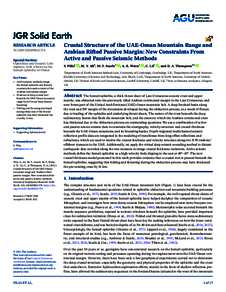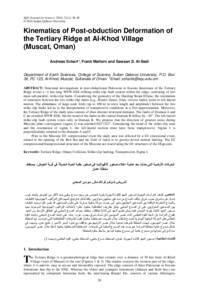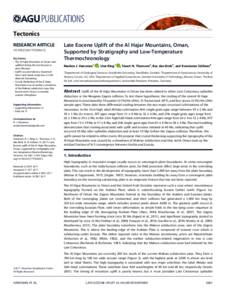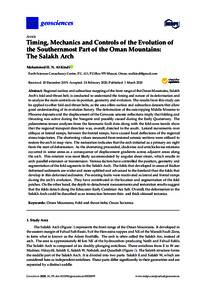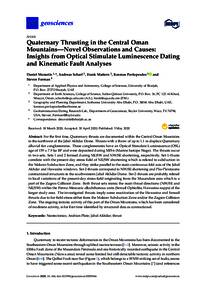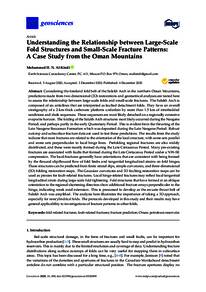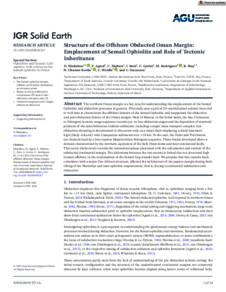وثيقة
Crustal structure of the UAE-Oman mountain range and Arabian rifted passive margin : new constraints from active and passive seismic methods.
المعرف
DOI: 10.1029/2020JB021374
المصدر
Journal of Geophysical Research: Solid Earth. v. 126, 4, e2020JB021374
المساهمون
الدولة
United Kingdom.
الناشر
Blackwell Publishing Ltd.
ميلادي
2021-04-01
اللغة
الأنجليزية
الموضوع
الملخص الإنجليزي
The Semail ophiolite, a thick thrust sheet of Late Cretaceous oceanic crust and upper mantle, was obducted onto the previously rifted Arabian continental margin in the Late Cretaceous, and now forms part of the United Arab Emirates (UAE)-Oman mountain belt. A deep foreland basin along the west and SW margin of the mountains developed during the obduction process, as a result of flexure due to loading of the ophiolite and underlying thrust sheets. The nature of the crust beneath the deep sedimentary basins that flank the mountain belt, and the extent to which the Arabian continental crust has thickened due to the obduction process are outstanding questions. We use a combination of active- and passive-source seismic data to constrain the stratigraphy, velocity structure and crustal thickness beneath the UAE-Oman mountains and its bounding basins. Depth-migrated multichannel seismic reflection profile data are integrated in the modeling of traveltimes from long offset reflections and refractions, which are used to resolve the crustal thickness and velocity structure along two E-W onshore/offshore transects in the UAE. Additionally, we apply the virtual deep seismic sounding method to distant earthquake data recorded along the two transects to image crustal thickness variations. Active seismic methods define the Semail ophiolite as a high-velocity body dipping to the east at 40°–45°. The new crustal thickness model presented in this work provides evidence that a crustal root is present beneath the Semail ophiolite, suggesting that folding and thrusting during the obduction process may have thickened the pre-existing crust by 16 km.
ISSN
2169-9313
قالب العنصر
مقالات الدوريات

